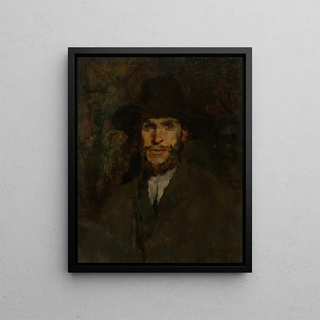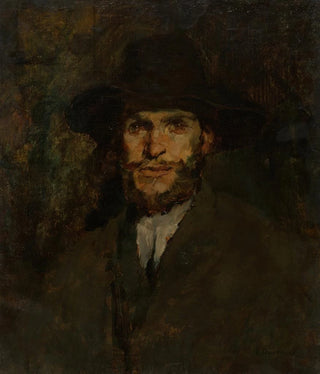Painting J. Frank Currier 1843-1909 - Frank Duveneck | Art print


View from behind

Frame (optional)
In the fascinating world of art, some works stand out for their ability to capture the very essence of humanity. The art print J. Frank Currier 1843-1909 - Frank Duveneck is a perfect example. This painting, both vibrant and moving, immerses us in the world of the late 19th century, a period marked by social and artistic upheavals. Frank Duveneck, an American painter of German origin, managed to transcend his era with a unique style that blends realism and impressionism. Through this work, he succeeds in immortalizing not only faces but also stories, emotions, and fleeting moments of everyday life.
Style and uniqueness of the work
Duveneck's style is characterized by an exceptional mastery of light and color. In this art print, each brushstroke seems to tell a story, each shade of color contributes to the overall atmosphere of the piece. The portraits he creates are imbued with rare intensity, where the psychology of the characters is highlighted through nuanced expressions and thoughtful poses. His painting technique, influenced by European masters, is distinguished by quick strokes and striking contrasts that bring his subjects to life. By focusing on details, Duveneck manages to create an intimate connection between the viewer and the depicted figures. This approach not only allows for appreciating the aesthetic beauty of the work but also for feeling a deep empathy towards the painted figures.
The artist and his influence
Frank Duveneck, born in 1848 in Cincinnati, left his mark on the American art landscape. Trained in Europe, he was influenced by artists such as Diego Velázquez and Édouard Manet, but also developed a style that is uniquely his own. As a central figure of the Cincinnati school, he played a crucial role in introducing realism to America. His works are characterized by a particular attention to daily life and portraits of his contemporaries, often from modest backgrounds. Duveneck's impact on his students and contemporaries is undeniable, as he encouraged

Matte finish

View from behind

Frame (optional)
In the fascinating world of art, some works stand out for their ability to capture the very essence of humanity. The art print J. Frank Currier 1843-1909 - Frank Duveneck is a perfect example. This painting, both vibrant and moving, immerses us in the world of the late 19th century, a period marked by social and artistic upheavals. Frank Duveneck, an American painter of German origin, managed to transcend his era with a unique style that blends realism and impressionism. Through this work, he succeeds in immortalizing not only faces but also stories, emotions, and fleeting moments of everyday life.
Style and uniqueness of the work
Duveneck's style is characterized by an exceptional mastery of light and color. In this art print, each brushstroke seems to tell a story, each shade of color contributes to the overall atmosphere of the piece. The portraits he creates are imbued with rare intensity, where the psychology of the characters is highlighted through nuanced expressions and thoughtful poses. His painting technique, influenced by European masters, is distinguished by quick strokes and striking contrasts that bring his subjects to life. By focusing on details, Duveneck manages to create an intimate connection between the viewer and the depicted figures. This approach not only allows for appreciating the aesthetic beauty of the work but also for feeling a deep empathy towards the painted figures.
The artist and his influence
Frank Duveneck, born in 1848 in Cincinnati, left his mark on the American art landscape. Trained in Europe, he was influenced by artists such as Diego Velázquez and Édouard Manet, but also developed a style that is uniquely his own. As a central figure of the Cincinnati school, he played a crucial role in introducing realism to America. His works are characterized by a particular attention to daily life and portraits of his contemporaries, often from modest backgrounds. Duveneck's impact on his students and contemporaries is undeniable, as he encouraged
12,34 €






